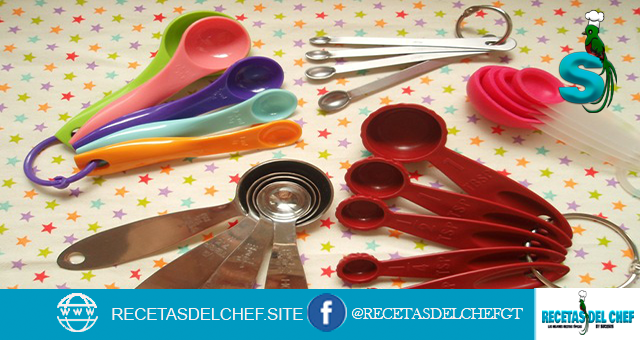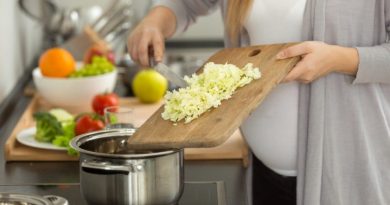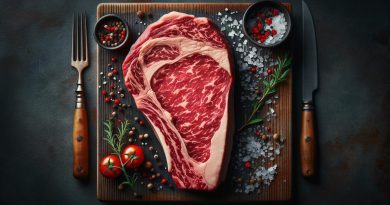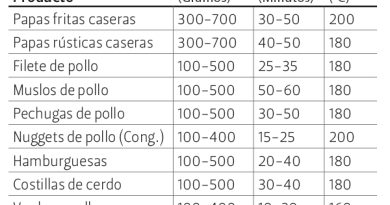Units of measurement used in kitchen
Units of measurement that are used in the kitchen: Every person who begins to venture into the culinary art has the same problem, they have a hard time understanding the units of measurement that are used in the kitchen, so we decided to write this article to help them all.
With this article you will learn to use a converter of kitchen measurements, also the different units of measurement in food and beverages, also the table of measures and equivalences in pastries.
We will also teach you the most used weights and measures in the kitchen, and especially the units of measurement in a recipe that are most used, so that in the end you are an expert in the units of measurement used in the kitchen and you will acquire a total knowledge of what are the units of measurement in the kitchen.
With this you will take an important step to be a chef and thus surprise all your relatives with the succulent recipes you prepare.
We invite you to read: The adoption of Bitcoin as legal tender in El Salvador provokes a wave of speculation
Frequently asked questions about the units of measurement used in the kitchen
These are the most frequently asked questions about the units of measurement that are used in the kitchen.
What are the Units of Measurement used in the kitchen?
Ounce (oz) equals 30 ml. Cup is equivalent to 240 ml. Pint is equivalent to 480 ml. Tablespoon (spoon) equals 15 ml.
What are themost commonly used kitchen measures?
- Liter (l.)
- Milliliter (ml.)
- Cubic centimeters (c.c.)
- Kilograms and grams (kg. and g. or gr.)
- Pound (lb.)
- Ounce (oz.)
- Tablespoon (c/s or c.s.)
- Dessert teaspoon (c/c or c.c.)
What units of measurement are used in the kitchen in an oven?
Degrees Celsius for temperatures (180°C for example)
What is a measure in confectionery?
Units of measurement for liquid ingredients are usually reflected in cups, tablespoons, teaspoons, or fluid ounces; for solid ingredients in grams, cups or tablespoons. To measure liquid ingredients, the most commonly used are measuring jugs, measuring cups and measuring spoons.
Conversion tables of measures used in cooking: Volume measurements
Both in cooking and in confectionery, in Anglo-Saxon countries where the use of the Imperial System of units is common, volume measurements are usually expressed in cups , tablespoons (Tbsp), teaspoons (tsp), and ounces (oz) or liquid ounces (fl oz)
On the other hand, in Europe they use the International System of Units and in some Latin American countries a mixture of both is used.
This combination of measures expressed in the products and what we usually measure, since many times it is a bit complicated to follow recipes that are expressed in the system that we do not normally use and, what is worse, that we want to make a recipe that comes in cups and spoons and we only have a jar graduated in ml or the opposite case, that we only have our cups and have nothing to measure in ml.
Therefore, so that from now on, the difference of units is not a problem, here we present a series of tables with the conversions of the units that are used in the kitchen, which we hope you share on social networks with your acquaintances.
We start with the smallest volume measurements of all the units of measurement used in the kitchen:
As a curiosity, add that in the Imperial System, the “pinch” (pinch) is quantified and is equivalent to the eighth part of a teaspoon, that is, a teaspoon contains 8 pinches.
We continue with the volume measures of greater capacity:
And the pint is equivalent to 2 cups. Although it is a unit that when used to describe the ingredients of a recipe is usually reserved only for beer.
Of course there is also equivalence between cups and spoons:
And, to finish with volumetric conversions, we have prepared a table to go from cups to liquid ounces.
Conversion tables of measures used in cooking: Volume-Weight
It is also common in Anglo-Saxon recipes to use volume measurements (cups and spoons) for solid ingredients that in other places are weighed in grams, such as flour or sugar. This does mislead because, depending on the density of the ingredient, the same weight can occupy a very different volume. Here are some conversions.

Conversion tables of measures in kitchen: Weight
In the Imperial System pounds and ounces are used, in the International grams and kilograms, with the following equivalences:
Conversion tables of units of measurement used in the kitchen: Length
Although they do not appear in the ingredients, it is not uncommon for length measurements to appear in cooking recipes when it comes to describing the size of molds or trays. In this case, the Imperial System uses inches (inch) and the International System uses cm.
Below you can see the equivalence between these units for the most common measurements.
Conversion tables of measures used in cooking: Temperatures
And, to finish with this series of measurement conversion tables, a temperature conversion table could not be missing, because it is a data that appears to us whenever we have to use the oven. On this occasion, we have rounded up the equivalences a little to adapt to the most frequent scales of the temperature selectors of the ovens.
In the case of typical kitchen thermometers, there is usually no problem, because the usual thing is that they incorporate two different measurement scales, one for each system of units.
Units of measurement kitchen in English
In case you sometimes come across very fancys recipes or they want to see it very cool and they put strange terms in English, or the recipe is in English … I leave you some terms that are not entirely common and will help you.
* Tad = 1/4 teaspoon………………………………………………………………………….. A little
* Dash = 1/8 teaspoon (1/2 tad)……………………………………………………………………………………………. One pinch, one touch
* Pinch = 1/16 (or 1/2 dash)…………………………………………………………………………………………………………………………………………………. One pinch
* Smidgen (smidge for short) = 1/32 teaspoon (or 1/2 pinch)……….A little bit, a little
bit* Drop = 1/64 teaspoon (or 1/2 smidgen)…………………………………………………………………………………………………………….. One drop
* Hint = A trace (1/2 drop)…………………………………………………………….. A very slight insinuation
Therefore I leave you some terminology in English:
‘Teaspoon’ and ‘tablespoon’
I like to refer to them as the ‘little spoon’ and the ‘big spoon’. Usually, this form of measurement is used for spices and small amounts of liquid: for example, “two teaspoons of sugar”; or “1 tablespoon of vanilla extract”.
‘Cups’
This measure is used for large amounts of spices, liquids, or powdered ingredients such as flour or dough. One cup equals about eight ounces of an item, or about 226 grams.
‘Pinch’
This word is used to refer to a small amount of an ingredient.To get a ‘pinch’ of a spice, collect the spice with your thumb and index finger; this is what a ‘pinch’ is. Usually, this measure is used for solid ingredients that can be easily picked up with the thumb and index finger.
‘Ounces’ and ‘grams’
Depending on where your recipe book was written, you will be able to see the measurements in ‘ounces’ or ‘grams’. In American recipes, you will see ‘ounces’ and in most other countries, you will see ‘grams’. Both measures are used when more than one tablespoon of an ingredient is needed.
These measurements can be used for liquids, solids, spices, and anything else you want to measure. 1 ounce equals about 28.3 grams.
‘Cloves’
This word is mainly used in relation to garlic. If you’ve ever used garlic, you’ll notice that a whole head of garlic can very easily get rid of several pieces, and each of those little pieces of garlic is called ‘clove’.
‘Inches’ and ‘centimeters’
These measurements are usually used when the length of the element is very important. For example, you may need 1-inch long jalapeños to make peppers with cheddar cheese. Generally, these measures refer to foods or solid ingredients.
Inches means Inches
Centimters means centimeters
One inch equals 2.5 centimeters.
COMMON ABBREVIATIONS of units of measurement in the kitchen
GRADE °or package package grade
.
DOZEN dna.
PAINT pint.
GALLON gal.
LIBRA lib. or #
HORA hr.
QUART0 crt.
INCH ” or in.
SECOND sec.
MINUTE min.
TABLESPOON cda.
OUNCE oz.
TEASPOON tsp.
Finally if your oven does not have numbers on the knob, share with us how you do it to know how much each temperature is, or if you use a kitchen thermometer.
And if at any time you need to do a conversion of units for an amount that does not appear in the tables, in this link you can access an online converter.
We hope that this article will be useful to you and you will learn about all the units of measurement that are used in the kitchen and thus be a professional cook.
We recommend you read the following recipe to use what you learned about the units of measurement in cooking: Recipe for chickpeas in Guatemalan honey
Share this note of units of measurement in the kitchen on all your social networks.
Chef by Sucesos | Recipes The best typical recipes
We recommend you read the following note: Chef’s Recipes




